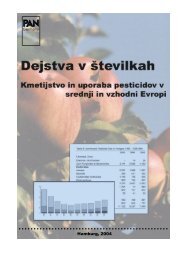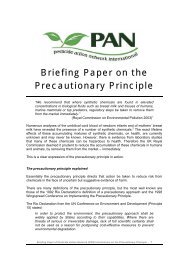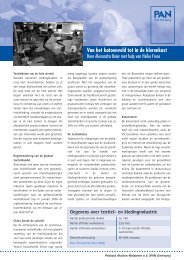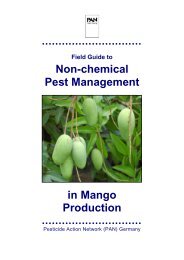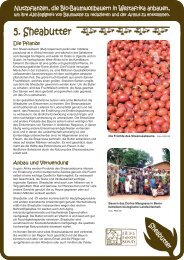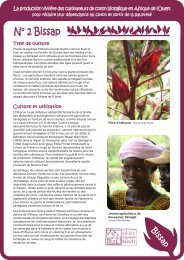Field Guide: How to Grow Crops without Paraquat - Online ...
Field Guide: How to Grow Crops without Paraquat - Online ...
Field Guide: How to Grow Crops without Paraquat - Online ...
You also want an ePaper? Increase the reach of your titles
YUMPU automatically turns print PDFs into web optimized ePapers that Google loves.
<strong>Field</strong> <strong>Guide</strong>: <strong>How</strong> <strong>to</strong> Live and Work Without <strong>Paraquat</strong><br />
Distribution<br />
Asia, Australia, Africa, South America, USA<br />
Description<br />
The stem has a spreading, creeping and mat-forming<br />
structure. It roots at the lower nodes. The flower head<br />
has 2-7 spikelets borne at the tip of the stem. The<br />
seed head looks like a crow's foot, hence the name.<br />
Each plant may produce up <strong>to</strong> 60,000 seeds.<br />
Effect and impact<br />
The weed reduces yields as it competes in the nutrient<br />
uptake, moisture, and light during the growing season.<br />
It also interferes in the harvesting operation.<br />
Methods of control<br />
1. Proper seed selection<br />
2. Thorough land preparation<br />
3. Regular field moni<strong>to</strong>ring<br />
4. Hand weeding/hand pulling when the weeds are<br />
young<br />
5. Cultivation using farm or mechanical implements<br />
6. Removing weeds before they start <strong>to</strong> flower<br />
7. Mulching<br />
8. Closer planting<br />
9. Intercropping<br />
Goosegrass<br />
Scientific name: Eleusine indica<br />
Synonyms: Bullgrass, Crow's foot grass, Goosefoot,<br />
Indian goose grass, Silver crabgrass,<br />
Wire grass<br />
Distribution<br />
Worldwide<br />
Description<br />
The stem is erect, flattened, and branching, with<br />
smooth few long hairs along the edges. It is whitish or<br />
pale-green in color. The leaves are smooth and darkgreen<br />
with laterally flattened or folded blades. Mature<br />
leaves are very difficult <strong>to</strong> cut unless with very sharp<br />
farm implements. The flower head is windmill-like. The<br />
flowers are composed of 2 -10 flattened, finger-like<br />
spikes that look like a zipper, which emerge from a<br />
common point. The roots are strong and can easily<br />
grow in compacted soil. The weed is propagated by<br />
seeds and flowers the whole time. Each plant can<br />
produce up <strong>to</strong> 40,000 seeds.<br />
Effects and impacts<br />
Goosegrass can reduce yields for it competes with the<br />
main crop for water, nutrient, and sunlight uptake. It is<br />
an alternate host for tungro, ragged stunt, and rice<br />
yellow mottle diseases and for numerous insect pests<br />
like; aphids, armyworm, cutworm, hairy caterpillar, leaf<br />
folders, leafhoppers, mealybugs, plant hoppers, rice<br />
bugs, among others. Once established, this weed is<br />
difficult <strong>to</strong> eradicate. The weed, as studies show, is<br />
found <strong>to</strong> be resistant <strong>to</strong> <strong>Paraquat</strong> on vegetables;<br />
Tluazifop-p-butyl and Glyphosate in orchards; and<br />
Fluazifop-p-butyl and Propaquizafop on croplands and<br />
vegetables in some parts of Malaysia.<br />
Methods of control<br />
1. Proper seed selection<br />
2. Cutting the weeds (using sharp-bladed farm<br />
implements) before flowering, can reduce their<br />
population.<br />
3. Hand weeding of seedlings- it is difficult <strong>to</strong> do<br />
handweeding once the plant is mature and wellestablished<br />
due <strong>to</strong> its rough root system.<br />
4. Mulching (2-3 inches layer mulch) prevents the<br />
seeds from germinating. Germination occurs<br />
mainly on the soil surface. Seeds rarely germinate<br />
deeper than 8 cm.<br />
5. Proper plowing and harrowing before planting<br />
6. Regular field moni<strong>to</strong>ring<br />
Habitat<br />
Cultivated and uncultivated areas<br />
Affected crops<br />
Corn, upland rice, sweet pota<strong>to</strong>, cassava, sugarcane,<br />
cot<strong>to</strong>n, vegetables, soybean and other legumes, and<br />
other crops<br />
•••••••••••••••••••••••••••••••••••••••••••••••••••<br />
16 Pesticide Action Network (PAN) Germany



